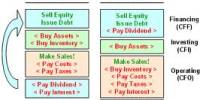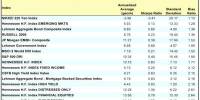Face Value
The value as appeared on the face of the security is called face value. It is the value printed or depicted on a coin, banknote, postage stamp, ticket, etc., especially when less than the actual value. The face value of shares is the value at which the share is actually listed on the stock market. It is also called par value and can be found in the share certificate.
Characteristics –
- Face value is not calculated. It is determined when the shares are issued by the company depending on the capital the company wishes to raise.
- It describes the nominal value or dollar value of a security; the face value is stated by the issuing party. However, their market value need not bear any relationship to the face value.
- It does not change. It remains fixed. However, if the company decides to split the shares then the face value can change.
- Face value also referred to as par value or nominal value, is the value shown on the face of a security certificate, including currency.
- It is the original cost of the shares as listed on the certificate.
- It is also known as par value which is the legal capital of each share of stock held by an individual.
The face value is the value of a coin, stamp, or paper money, as printed on the coin, stamp, or bill itself by the issuing authority. This value of coins, stamps, or bill is usually its legal value. For example, some rare coins or stamps may be traded at prices considerably above their face value. And coins may have a salvage value due to more or less valuable metals that they contain.
The face value of the share is least meaningful to you, the investor. The concept most commonly applies to stocks and bonds, so it is particularly important to bond and preferred stock investors. It is meant for accounting purposes to find out the equity share capital of the business. The value determines the purchase price which is payable for buying the shares and also the value realized when you sell the share. It is a crucial component of many bonds and preferred stock calculations — including interest payments, market values, discounts, premiums, and yields.
Face value is an often arbitrarily assigned amount used to calculate the accounting value of a company’s stock for balance sheet purposes. For example, when a company goes public, it can have a face value of $ 10. And it may trade at a market price of $ 500.
















